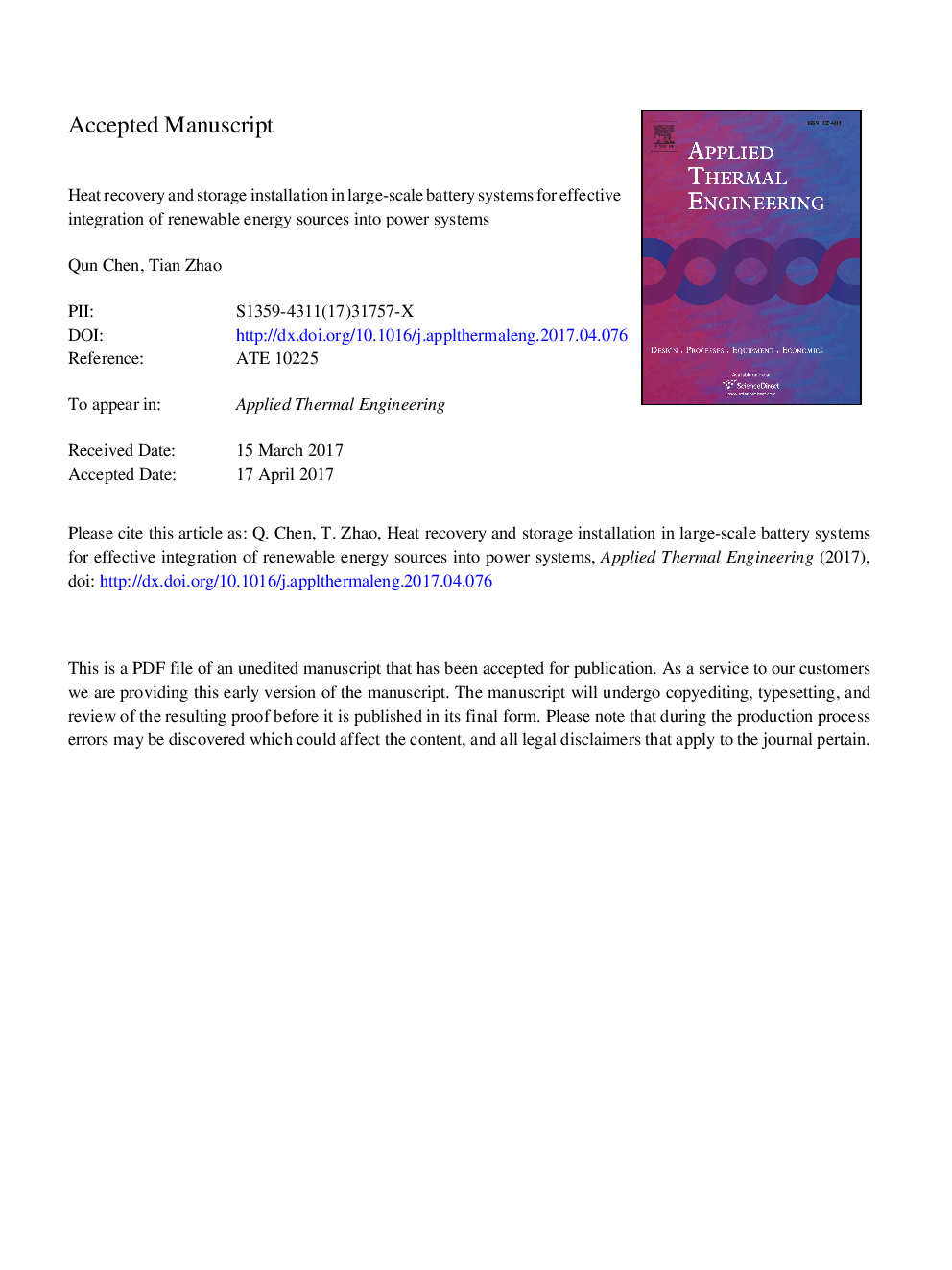| Article ID | Journal | Published Year | Pages | File Type |
|---|---|---|---|---|
| 4990915 | Applied Thermal Engineering | 2017 | 38 Pages |
Abstract
The large-scale battery is a promising solution to reduce the wind and solar curtailments, while some electricity will be dissipated to heat and wasted inevitably. In this contribution, a heat recovery and thermal energy storage (TES) subsystem are introduced to the battery system to recover heat generated by the battery and satisfy a part of heat load concurrently. By applying the newly proposed power flow method in heat transfer system analysis together with the traditional power system analysis method, the power flow mode of the integrated electric and thermal energy system is established, and the system is then optimized to reduce wind curtailment. The optimized results present that the introduction of the heat recovery and TES subsystem could supply a certain percentage of heat to residents by recovering the generated heat from the battery and decrease the coal consumption of the thermal power plant and the combined heat and power plant simultaneously. Meanwhile, the mass flow rate of the heat conducting oil keeps high in most time and drops to near zero when the battery switches between charge and discharge. Furthermore, the alternation frequency of the mass flow rate of the heat conducting oil has a lower bound for normal operation.
Related Topics
Physical Sciences and Engineering
Chemical Engineering
Fluid Flow and Transfer Processes
Authors
Qun Chen, Tian Zhao,
